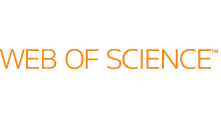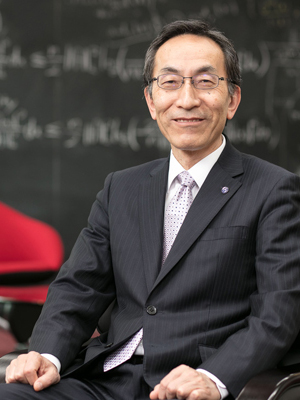Related Research Articles
The Institute for Scientific Information (ISI) was an academic publishing service, founded by Eugene Garfield in Philadelphia in 1956. ISI offered scientometric and bibliographic database services. Its specialty was citation indexing and analysis, a field pioneered by Garfield.

Eugene Eli Garfield was an American linguist and businessman, one of the founders of bibliometrics and scientometrics. He helped to create Current Contents, Science Citation Index (SCI), Journal Citation Reports, and Index Chemicus, among others, and founded the magazine The Scientist.

Yakir Aharonov is an Israeli physicist specializing in quantum physics. He has been a Professor of Theoretical Physics and the James J. Farley Professor of Natural Philosophy at Chapman University in California since 2008. He was a distinguished professor in the Perimeter Institute between 2009-2012 and is a professor emeritus at Tel Aviv University and at University of South Carolina. He is president of the IYAR, The Israeli Institute for Advanced Research.
The Science Citation Index Expanded is a citation index originally produced by the Institute for Scientific Information (ISI) and created by Eugene Garfield.
Thomson Scientific was one of the six strategic business units of The Thomson Corporation, beginning in 2007, after being separated from Thomson Scientific & Healthcare. Following the merger of Thomson with Reuters Group to form Thomson Reuters in 2008, it became the "Scientific" business unit of the new company. In 2009, the unit came together with the Healthcare division of Thomson Reuters to form the Healthcare & Science division. The healthcare business was sold in 2012 to become Truven Health Analytics. The Science unit of Thomson Reuters provided information services for the academic, business, and R&D communities. It had headquarters in Philadelphia, London, Singapore and Tokyo with about 2,400 staff in more than 20 countries. Its products were Aureka, Delphion, Cortellis, Derwent World Patents Index (DWPI), EndNote, Horizon Global, Horizon Sourcing, IDdb, IDRAC, IP Management Services, ISI Web of Knowledge, MicroPatent PatentWeb, Techstreet Industry Standards, ThomsonPharma, GeneGo, IDDB, Thomson Regulatory Solutions, and Web of Science.

This article discusses women who have made an important contribution to the field of physics.

Thomson Reuters Corporation is a Canadian multinational information conglomerate. The company was founded in Toronto, Ontario, Canada and maintains its headquarters at 19 Duncan Street there.

The Web of Science is a paid-access platform that provides access to multiple databases that provide reference and citation data from academic journals, conference proceedings, and other documents in various academic disciplines. Until 1997, it was originally produced by the Institute for Scientific Information. It is currently owned by Clarivate.

Sir Konstantin Sergeevich Novoselov is a Russian–British physicist. His work on graphene with Andre Geim earned them the Nobel Prize in Physics in 2010. Novoselov is a professor at the Centre for Advanced 2D Materials, National University of Singapore and is also the Langworthy Professor of the School of Physics and Astronomy at the University of Manchester.

Taeghwan Hyeon is a South Korean chemist. He is SNU distinguished professor in the School of Chemical and Biological Engineering at Seoul National University, director of Center for Nanoparticle Research of Institute for Basic Science (IBS), and an associate editor of the Journal of the American Chemical Society.

Hideo Ohno is a Japanese physicist. He is the 22nd president of Tohoku University, succeeding Susumu Satomi in April 2018.
The Emerging Sources Citation Index (ESCI) is a citation index produced since 2015 by Thomson Reuters and now by Clarivate. According to the publisher, the index includes "peer-reviewed publications of regional importance and in emerging scientific fields".

Clarivate Plc is a British-American publicly traded analytics company that operates a collection of subscription-based services, in the areas of bibliometrics and scientometrics; business / market intelligence, and competitive profiling for pharmacy and biotech, patents, and regulatory compliance; trademark protection, and domain and brand protection. In the academy and the scientific community, Clarivate is known for being the company that calculates the impact factor, using data from its Web of Science product family, that also includes services/applications such as Publons, EndNote, EndNote Click, and ScholarOne. Its other product families are Cortellis, DRG, CPA Global, Derwent, MarkMonitor, CompuMark, and Darts-ip, and also the various ProQuest products and services.
References
- ↑ "Acquisition of the Thomson Reuters Intellectual Property and Science Business by Onex and Baring Asia Completed". PR Newswire. October 3, 2016.
- ↑ Cressey, Daniel (September 22, 2010). "Nobel predictions proliferate". Nature News & Comment (News blog). Archived from the original on December 3, 2011. Retrieved September 9, 2011.
- ↑ "Twenty-one 'Thomson Reuters Citation Laureates' Recognized for Their Contributions to the Advancement of Science". PR Newswire. Philadelphia and London: PR Newswire Association LLC. 2010. Retrieved 2011-09-08.
- 1 2 Pendlebury, David (2011). "The Methodology Behind the Predictions". Choosing Thomson Reuters Citation Laureates. Thomson Reuters. Archived from the original (Online access) on 2011-07-07. Retrieved 2011-09-08.
- 1 2 Pendlebury, David (2011). "The Process and the Results" (Online access). Choosing Thomson Reuters Citation Laureates. Thomson Reuters. Retrieved 2011-09-08.
Citation Laureates have been cited so often in the last two or more decades that these scientists typically rank in the top 0.1% in their research areas. Not only do Citation Laureates have stratospheric citation totals, they also typically write multiple high-impact reports, and do so over many years.
- ↑ "Identifying extreme impact in research, Clarivate Analytics uses citations to forecast Nobel Prize winners". Clarivate Analytics. September 20, 2017.
In 15 years, 43 Citation Laureates have gone on to receive Nobel honors
- ↑ "Hall of Citation Laureates". Clarivate Analytics. Archived from the original on 2017-10-28. Retrieved 2017-09-20.
